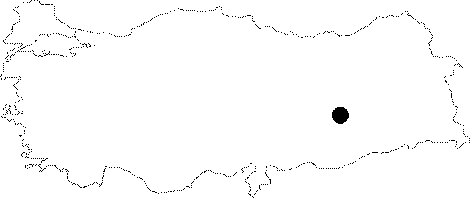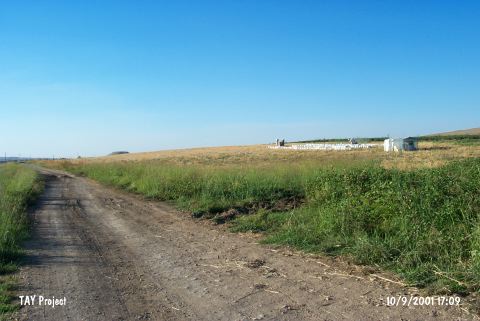|
©The Archaeological Settlements of Turkey - TAY Project
|
|
|
|
|
|
Abdullahin Düzü |
|
|
For site maps and drawings please click on the picture...  |
For photographs please click on the photo...  |
|
Type:
|
Mound |
|
Altitude:
|
510 m |
|
Region:
|
Southeastern Anatolia |
|
Province:
|
Diyarbakir |
|
District:
|
Bismil |
|
Village:
|
Salat |
|
Investigation Method:
|
Survey |
|
Period:
|
Early |
|
|
|
 |
|
| Location: The site lies east of Diyarbakir; between Bismil and Batman. It is located 2.1 km away from Yukarisalat while going towards Salat; immediately northeast of the dirt road. Abdullahin Düzü is not shown on the 1:100000 Mardin M 45 map. Salat Stream joins with Tigris without meander; on Algaze's map. |
| Geography and Environment: The 1-2 m high; round and broad mound; 100 m in diameter; is located on the eastern bank of Salat Stream; on the northern bank of Tigris; close to the junction of Salat Stream and Tigris; above the lower terrace of overflowing plain of Tigris. The mound is slightly damaged because of being plowed. Due to the distribution of pottery it covers an area of 1-2 hectares. |
| History: |
| Research and Excavation: The site was discovered during the research project conducted by Algaze in which an area of 40x3-4 km between Bismil District and the junction of Batman Suyu and Tigris was surveyed. |
| Stratigraphy: The mound is interpretated to be a single-level settlement depending on the sherds dating to the Early Chalcolithic Age. This assumption requires archaeological excavation. |
| Small Finds: Pottery: The sherds are in Halafian type. Only the painted sherds have been published by Togul for now [Togul 1996:37]. Sherds of carinated bowls with everted rims and slightly everted forms are observed in the Halafian painted ware. They are sand tempered; light pinkish buff colored. Almost all are paint-decorated in red brown on light colored slip.The decoration technique is identical with that in the other sites in the region.The decoration motifs are bands on rim and waves; dotted cross-hatchings; and branches. There is not much information about the distribution of pottery. |
| Remains: |
| Interpretation and Dating: Halaf Period excavations would be easy to conduct; since it is a single-leveled; small settlement. |